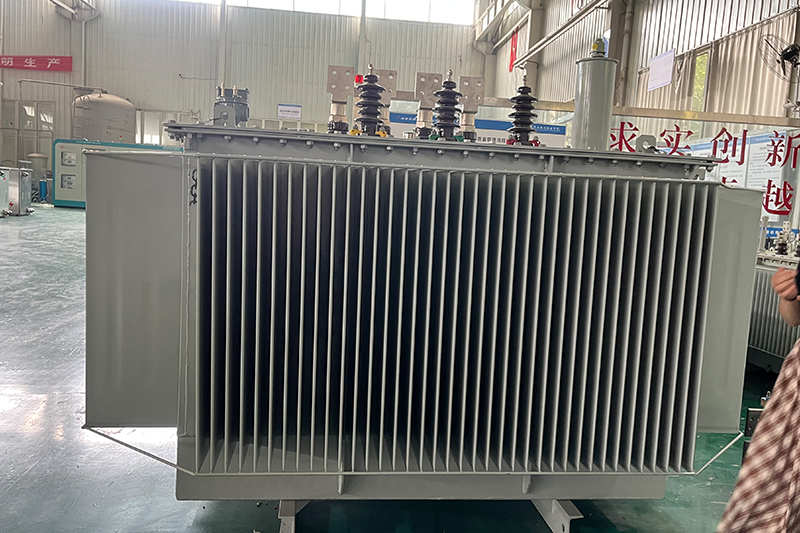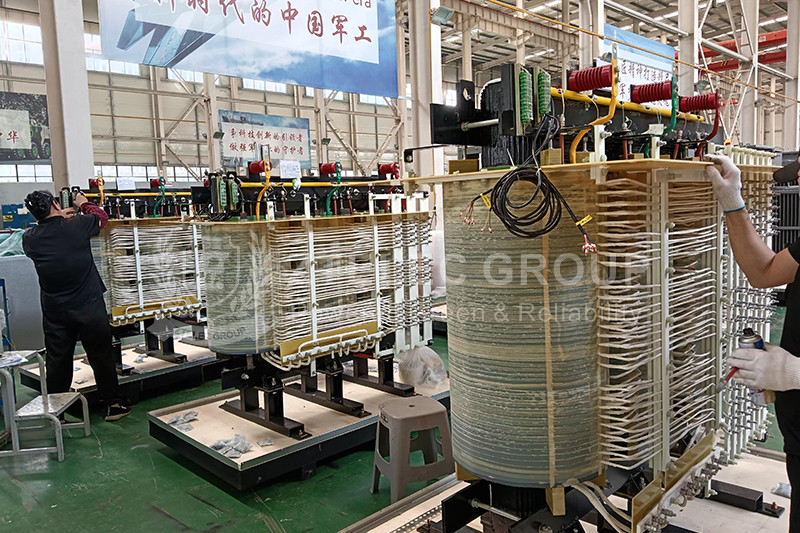Oil-Immersed Transformer Capacity Guide: Sizing, Selection, and Applications
Oil-immersed transformers are essential components in power systems, providing stable and efficient voltage transformation for a wide range of applications. Selecting the right transformer capacity is crucial for ensuring system reliability, operational safety, and cost-effectiveness. This article offers a comprehensive guide on capacity calculation, key influencing factors, classification of transformer capacities, and how to choose the ideal capacity for different usage scenarios.

How to Calculate Oil-Immersed Transformer Capacity
The capacity of an oil-immersed transformer is expressed in kilovolt-amperes (kVA). The standard formula for calculating capacity in a three-phase system is:
Capacity (kVA) = Voltage × Current × 1.732 ÷ 1000
For example, a transformer with a primary voltage of 220kV and a rated current of 1000A would have a capacity of:
220 × 1000 × 1.732 ÷ 1000 = 380.72 kVA
This formula serves as the foundation for selecting an appropriately sized transformer based on load and voltage requirements.
Key Factors Influencing Transformer Capacity
Several environmental and operational factors affect the effective capacity of oil-immersed transformers:
Voltage Level
Higher voltage levels typically require higher transformer capacities due to greater transmission distances and higher energy demands.
Load Rate
The transformer's load rate directly impacts sizing. A higher load rate demands greater capacity to avoid overloads and ensure reliability.
Cooling Method
Cooling efficiency varies with the method used. Natural cooling (ONAN) supports lower capacities, while forced cooling (OFAF) allows for higher-capacity operation.
Ambient Temperature
High ambient temperatures reduce cooling performance, requiring capacity derating to prevent overheating and insulation degradation.
Altitude
At elevations above 1000 meters, thinner air reduces heat dissipation. Capacity should be reduced by about 10% for every 1000m increase in altitude.
Voltage Fluctuations
Unstable input voltages can cause transformers to operate below their rated capacity. Proper sizing must account for this variability.
Common Capacity Classes for Oil-Immersed Transformers
1. Small to Medium Capacity (30–2500 kVA)
Voltage Level: 10–35 kV Cooling Method: Natural cooling (ONAN) Typical Applications: Residential areas, commercial buildings, small to medium factories Example: An 800 kVA transformer can support a 50,000 m² shopping center, powering HVAC systems, lighting, and elevators.
2. Large Capacity (2500 kVA–100 MVA)
Voltage Level: 110 kV and above Cooling Method: Forced oil cooling (OFAF) Typical Applications: Substations, steel mills, data centers, utility-grade power plants Example: A 50 MVA transformer is ideal for a 200 MW solar power station, ensuring efficient grid integration.

Capacity Selection Guide for Different Application Scenarios
1. Industrial Facilities
Typical Uses: Steel plants, chemical manufacturing, heavy machinery Recommended Capacity: 1000–2500 kVA Why: High inrush current equipment like arc furnaces and motors require larger capacity to handle start-up loads. Additional Tips: – Maintain load rate at ~85% for longevity – Reduce capacity by ~10% per 1000m altitude – Use sealed designs to prevent moisture intrusion in humid environments
2. Commercial and Public Buildings
Typical Uses: Shopping malls, hospitals, schools Recommended Capacity: 315–1000 kVA Why: Balanced power consumption patterns with emphasis on reliability and expansion Additional Tips: – Choose fully sealed oil-immersed types (e.g., S11-MR series) for insulation protection – Reserve 10–20% spare capacity for future expansion
3. Agricultural and Rural Applications
Typical Uses: Rural grids, irrigation stations, small workshops Recommended Capacity: 30–315 kVA Why: Seasonal demand and decentralized distribution require flexible sizing Additional Tips: – Use pole-mounted types for space-saving installations – Select models with expandable radiators to handle large day-night temperature variations
4. Harsh or Special Environments
Typical Uses: High-altitude zones, chemical plants, tropical regions Capacity Strategy: Adjust capacity based on derating factors such as altitude, temperature, and humidity Additional Tips: – Follow GB6450-86 standards for adjusting current and temperature rise limits – Use corrosion-resistant materials (e.g., stainless steel tanks) in corrosive or coastal environments
Select the Right Capacity for Long-Term Performance
Choosing the right oil-immersed transformer capacity requires a balanced evaluation of load demand, environment, cooling conditions, and voltage levels. By understanding calculation principles and adjusting for specific application scenarios, you can optimize transformer performance while reducing operational risks. Whether you're designing a substation, powering an industrial complex, or upgrading rural power systems, the right capacity selection ensures efficiency, stability, and long-term reliability.
- more+releated article
- 2025-10-21Application of K Factor Transformer
- 2025-10-21Detailed explanation about transformer model w
- 2025-10-2010kV Oil-Immersed Transformer Safety: Lightnin
- 2025-10-20What are The Advantages of Phenolic Cotton Clo
- 2025-10-17Are Three-Phase Isolation Dry-Type Transformer
- 2025-10-17G10 Epoxy Sheet: Choosing the Right Specificat
- 2025-10-1610kV Oil-Immersed Transformer Operation Inspec
- 2025-10-163240-B Epoxy Phenolic Glass Fiber Cloth Lamina
- 2025-10-15G10 Epoxy Sheet: The Preferred Insulation Mate
- 2025-10-15Analysis of Energy-Saving and Noise Control Te





